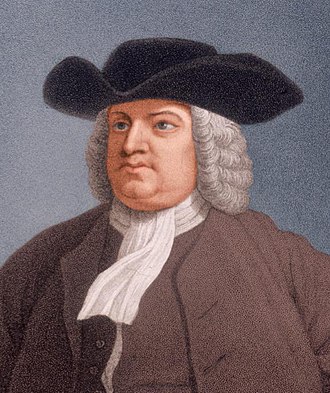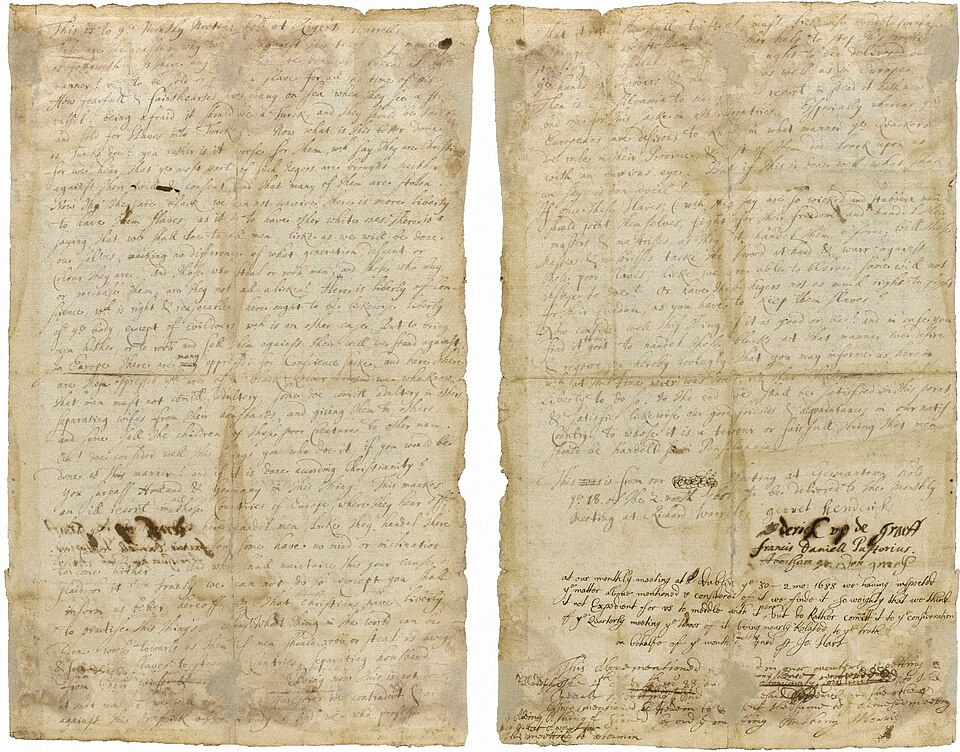
The Original 13 Families of Germantown, Pennsylvania, known commonly as The Original 13, mark a significant chapter in the history of German immigration to America. These families were the first German settlers in the British colonies, establishing Germantown in 1683. This article explores their origins, the reasons behind their migration, and the genealogical connections that link them to William Penn, the founder of Pennsylvania.[1]
Research your ancestors on MyHeritage
OriginsOrigins
The Original 13 Families hailed from Krefeld, a city in the Lower Rhine region of Germany. Krefeld was known for its weaving industry, which played a significant role in the livelihoods of many of these families. The religious landscape of Krefeld was diverse, with many residents identifying as Quakers or Mennonites. The quest for religious freedom and economic opportunities drove these families to seek a new life in America.[1] [2]
The JourneyThe Journey
In July 1683, these families embarked on their journey aboard the ship Concord, often referred to as the "German Mayflower." The ship, captained by William Jefferies, left Rotterdam on July 6, 1683, and arrived in the port of Philadelphia on October 6, 1683, after a voyage of 75 days. The passengers were greeted by Franz Daniel Pastorius, a German lawyer and close friend of William Penn, who had arrived earlier to prepare for their settlement. [3][4]
The 13 heads of families and their membersThe 13 heads of families and their members
The settlers who came to be known as the Original 13 Families were primarily heads of households, each bringing their families to the New World. The following are the 13 heads of families and brief details about their family members:[5]
- Leonard Arets
- Leonard Arets was a single weaver from Krefeld.
- Abraham Isacks op den Graeff
- Abraham, a weaver, traveled with his wife, Trintje Catharina Jansen, and was accompanied by his brothers Herman and Dirck, and their families.
- Hermann Isacks op den Graeff
- Herman, another weaver, traveled with his wife, Liesbet Isacks (Van Bebber). He was part of the op den Graeff family, which included their sister Margrit and mother Margriet Peters.
- Derick Isacks op den Graeff
- Derick, also a weaver, traveled with his wife, Nolcken (Vyten).
- Wilhelm Strepers
- Wilhelm was a single man, often confused with another Wilhelm Strepers who was married with children.
- Tönes Coenen-Heggers (Thones Kunders)
- Thones, a blue-dyer, traveled with his wife, Elin, and their sons Cunrad, Madtis, and John.
- Reiner Theissen-Doors (Tyson)
- Reiner was a single man whose sisters were married to Thones Kunders, Peter Kürlis, and Jan Lucken.
- Johann "Jan" Simons
- Johann traveled with his wife, Mercken (Lucken), and their daughter. Mercken was the sister of Johann Lucken.
- Johann "Jan" Lenssen
- Johann, a weaver, traveled with his wife.
- Peter Kürlis (Kewrlis)
- Peter, an innkeeper, traveled with his wife, Elisabeth (Doors), and their children Martha/Metgen and Agnes/Angenes.
- Johannes Bleickers
- Johannes traveled with his wife and son, Peter, who was born at sea.
- Johann "Jan" Lucken
- Johann traveled with his wife, Merken (Gastes). His sisters were married to Jan Simons and Abraham Tunes.
- Abraham Tunes Klinken
- Abraham traveled with his wife, Beatrix (Luckens), who was the sister of Johann Lucken.
Family connections and relationshipsFamily connections and relationships
The settlers were closely related through marriage and family ties. For instance, the op den Graeff brothers—Abraham, Herman, and Derick—were central figures among the settlers. The family connections extended through marriages, as seen with the Lucken family, whose members were married to other settlers. These relationships helped create a strong, supportive community in their new home.
Reasons for leavingReasons for leaving
Religious persecution and economic opportunityReligious persecution and economic opportunity
The primary reasons for the migration of the Original 13 Families were religious persecution and the pursuit of economic opportunities. The Quakers and Mennonites faced significant religious intolerance in Europe, which pushed them to seek a place where they could freely practice their faith. The economic opportunities in the New World, especially in the burgeoning colony of Pennsylvania, also attracted these families. [6]
William Penn and PennsylvaniaWilliam Penn and Pennsylvania

William Penn, an English Quaker and the founder of Pennsylvania, played a crucial role in the migration of these families. Penn envisioned Pennsylvania as a haven for religious freedom and economic prosperity. His need for settlers to colonize his land led him to invite persecuted religious groups, including the Quakers and Mennonites, to settle in Pennsylvania.
Penn's relationship with the Original 13 Families was facilitated through his friendship with Franz Daniel Pastorius, who helped organize the settlement of Germantown. Pastorius, a well-educated lawyer from Frankfurt, was instrumental in preparing the new colony for the arrival of the settlers and ensuring they had the resources to establish their community.[4]
Genealogical relationship between the "Op den Graeff" Family and William PennGenealogical relationship between the "Op den Graeff" Family and William Penn
The op den Graeff family, particularly the brothers Abraham, Herman, and Derick, had a significant connection to William Penn. This relationship was not merely one of settler and proprietor but also involved familial and communal bonds.
The Op den Graeff familyThe Op den Graeff family
The op den Graeff brothers were prominent figures among the Original 13 Families. They were skilled weavers and integral to the economic and social fabric of Germantown. Their leadership and commitment to the Quaker faith made them influential members of the early Pennsylvania community.
Connection to William PennConnection to William Penn
The op den Graeff family's connection to William Penn was multifaceted. Penn's vision for Pennsylvania as a place of religious tolerance aligned with the op den Graeffs' quest for a haven from persecution. Additionally, the op den Graeffs played a role in supporting Penn's efforts to attract more settlers to the colony, thereby helping to fulfill his goal of creating a prosperous and diverse community.
They are even related by blood: William Penns father, William Penn sen., married Margaret Jasper, the daughter of John Jasper and Alet Pleitjes. Alets sister Greitgen was the wife of Hermann op den Graeff, who was the father of the emigrants. The Head of the "op den Graeff" family was a second cousin to William Penn.
Establishment of GermantownEstablishment of Germantown
Upon their arrival in Philadelphia on October 6, 1683, the Original 13 Families were greeted by Franz Daniel Pastorius. He assisted them in establishing what would become Germantown. The settlement was named Germantown due to the large number of German settlers and the proximity to other German families who had previously settled in the region.[4]
Early challenges and achievementsEarly challenges and achievements

The initial years in Germantown were challenging for the settlers. They faced harsh winters, unfamiliar terrain, and the need to build homes and establish farms from scratch. Despite these difficulties, the community thrived due to their industrious nature and strong communal bonds.
One of the significant achievements of the Germantown settlers was their early involvement in the American antislavery movement. In 1688, just five years after their arrival, they organized the first petition in the English colonies to abolish slavery. This act of moral courage set a precedent for future generations and highlighted the community's commitment to justice and equality.[7]
LegacyLegacy
The legacy of the Original 13 Families of Germantown extends beyond their initial settlement. Germantown became a model of religious tolerance, economic prosperity, and social justice. The descendants of these families continued to play vital roles in the development of Pennsylvania and the broader American society.
German-American dayGerman-American day
The contributions of the Original 13 Families and other German immigrants were formally recognized with the establishment of German-American Day. First celebrated in 1883, on the 200th anniversary of Germantown's founding, the holiday honors the rich cultural heritage and contributions of German-Americans. Although the celebration waned during World War I, it was revived in 1983 and continues to be observed annually on October 6.
Continuing influenceContinuing influence
The influence of the Original 13 Families is evident in the continued vibrancy of Germantown and the broader Philadelphia area. The cultural, religious, and economic foundations they laid have left an indelible mark on the region. Their commitment to religious freedom, community, and social justice continues to inspire future generations. [1]
See alsoSee also
Explore more about The Original 13Explore more about The Original 13
- Researching your German ancestors webinar at Legacy Family Tree Webinars
- The voyages of our German Immigrants webinar
- From Krefeld to Germantown on NRW USA
- Historic Germantown on The Encyclopedia of Greater Philadelphia
- Germantown protest on Library of Congress
- Protest of the Germantown Mennonites on Teaching american history
References
- ↑ 1.0 1.1 1.2 https://www.deutschland.de/en/usa/us-immigration-americas-german-roots
- ↑ https://christianhistoryinstitute.org/magazine/article/germans-have-landed
- ↑ https://library.indianapolis.iu.edu/static/collections/kade/germantown.html
- ↑ 4.0 4.1 4.2 https://www.deutschlandfunk.de/germantown-usa-100.html
- ↑ https://www.geni.com/projects/Original-13-Families-of-Germantown-Pennsylvania/4496356
- ↑ https://www.loc.gov/classroom-materials/immigration/german/call-of-tolerance/
- ↑ https://www.nps.gov/articles/quakerpetition.htm

